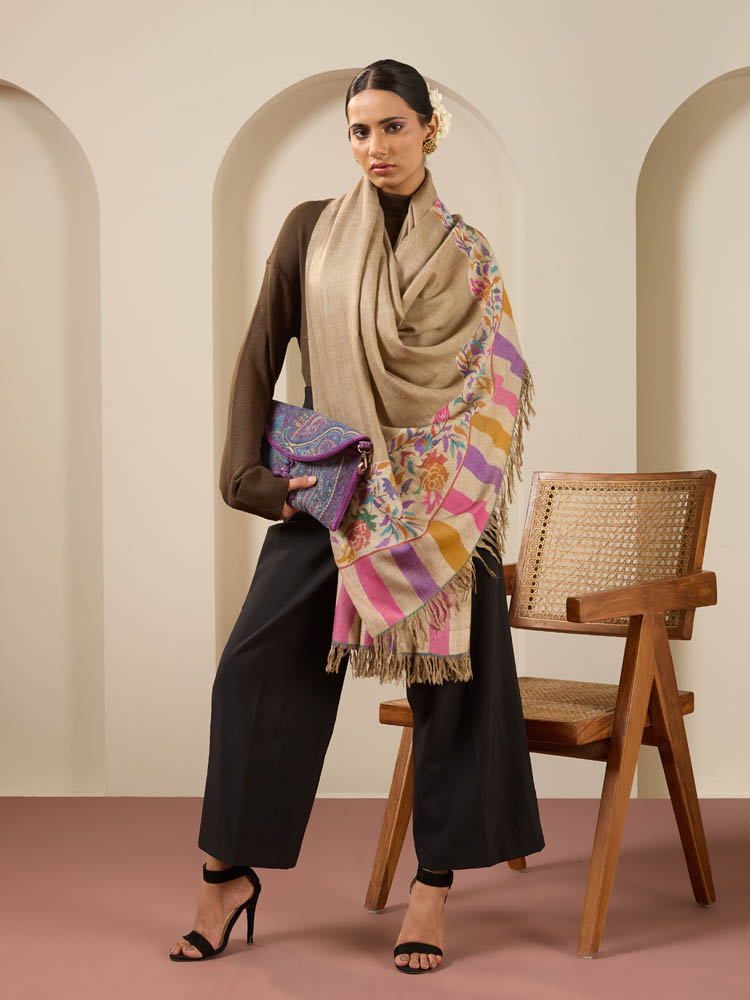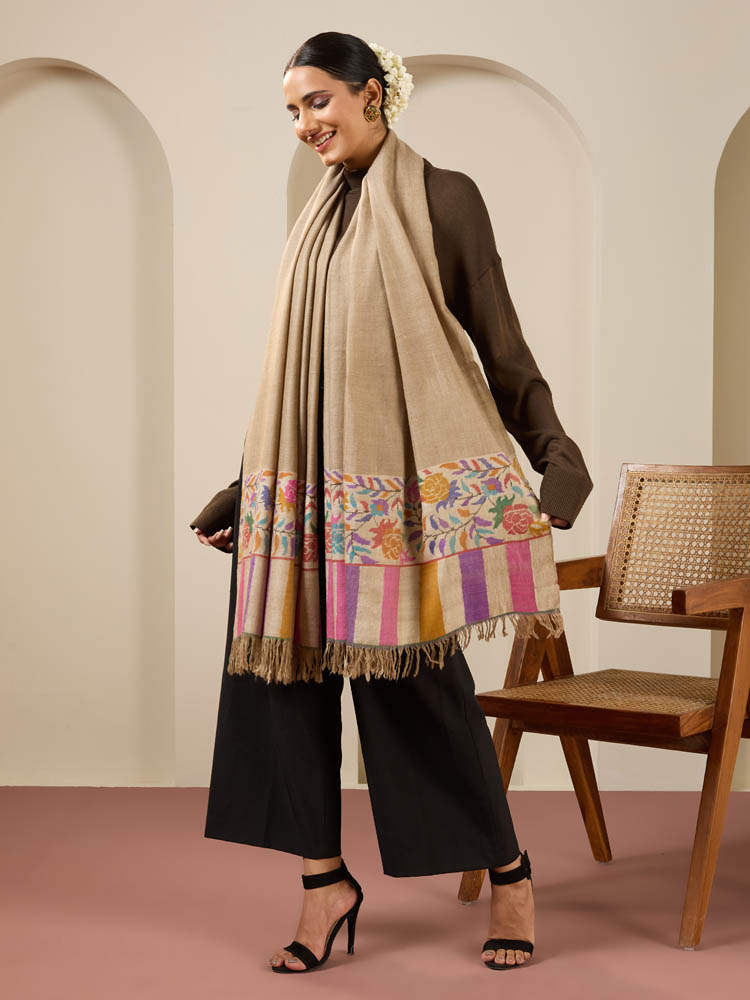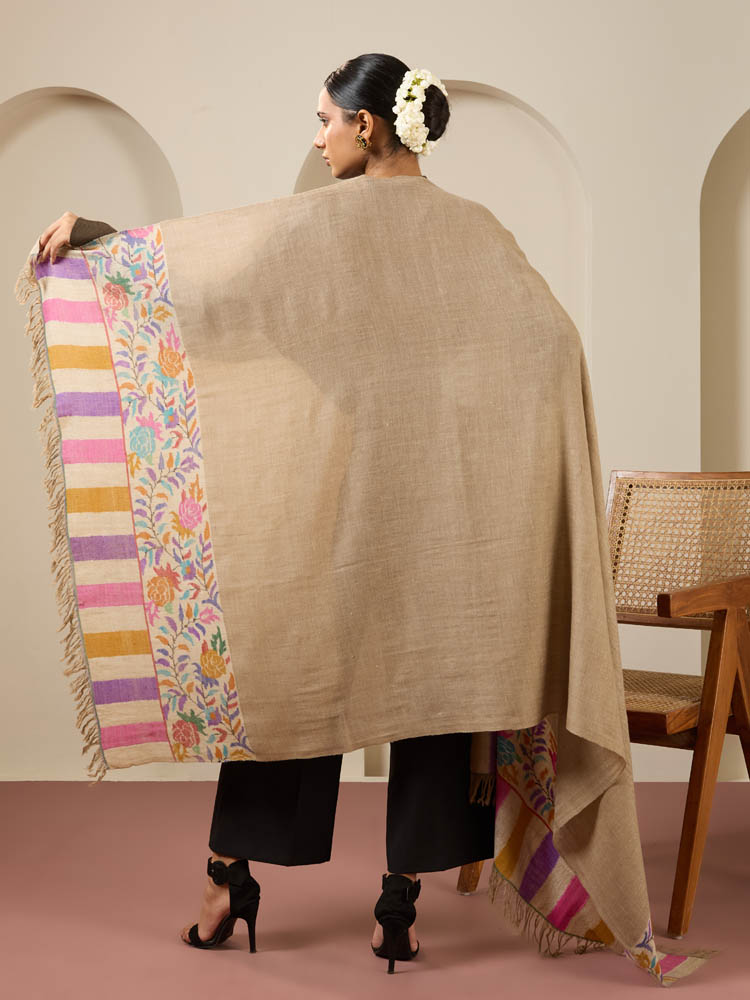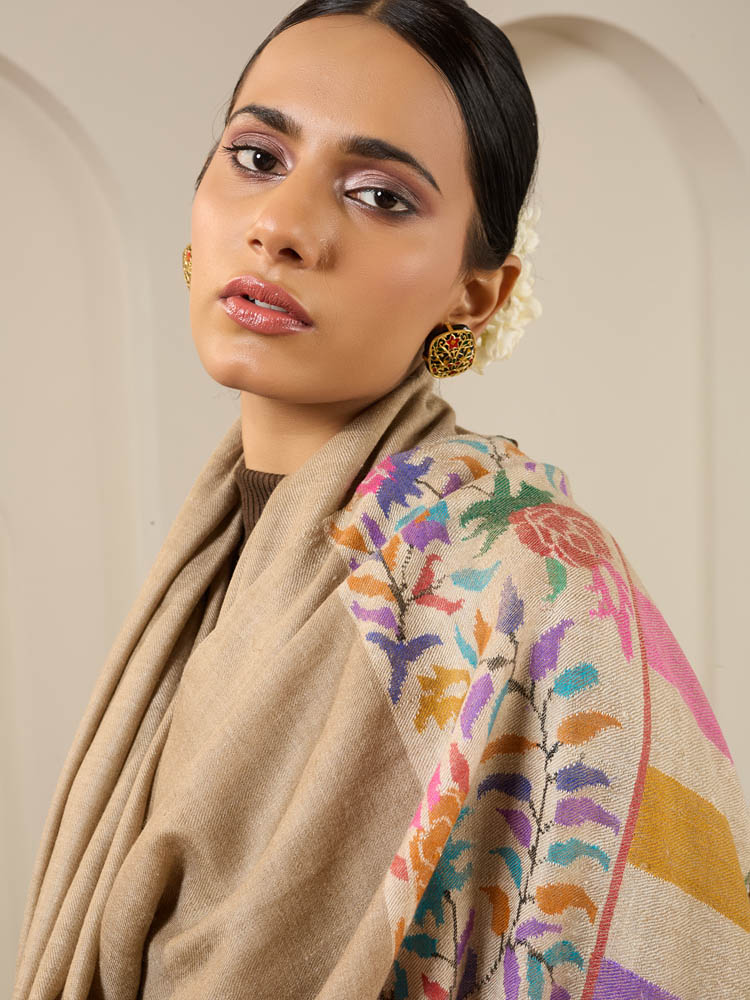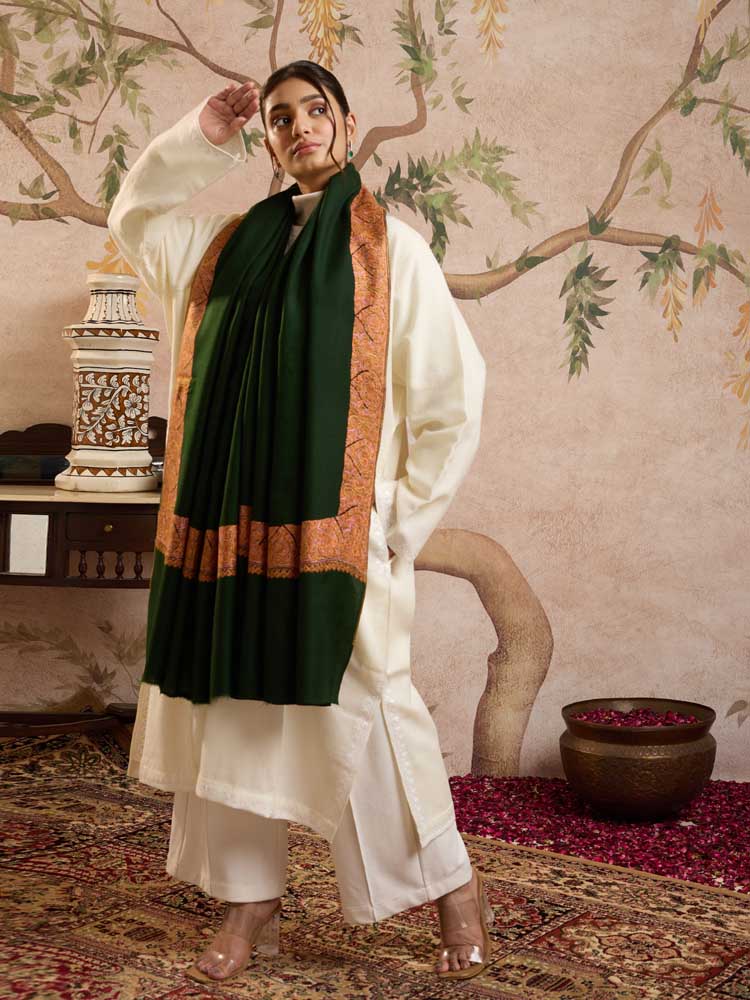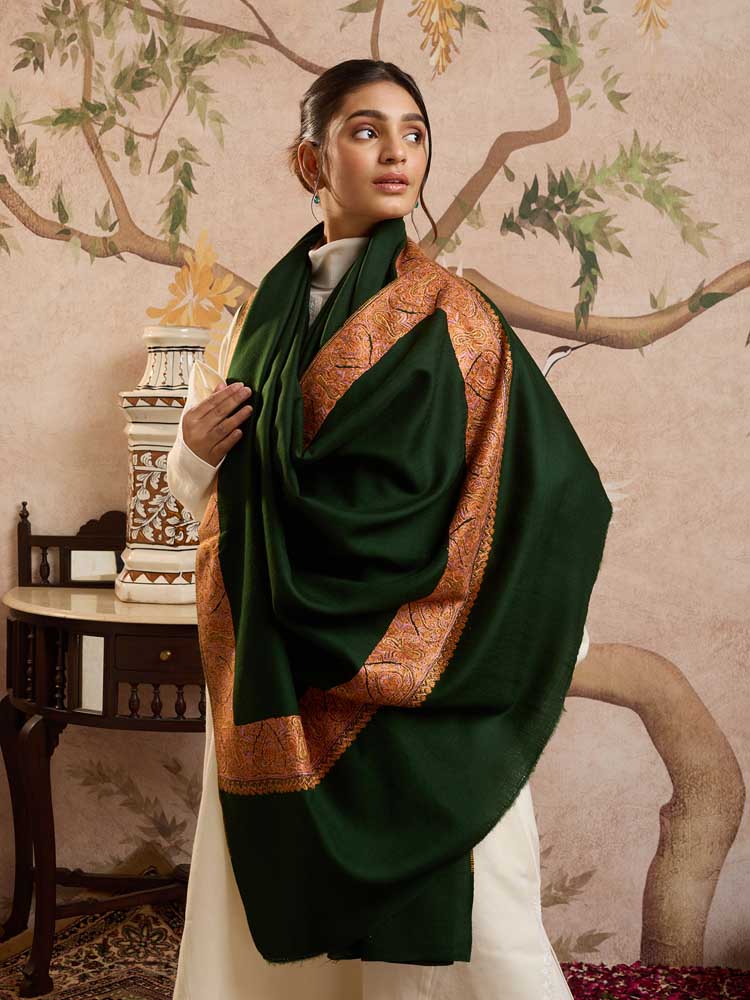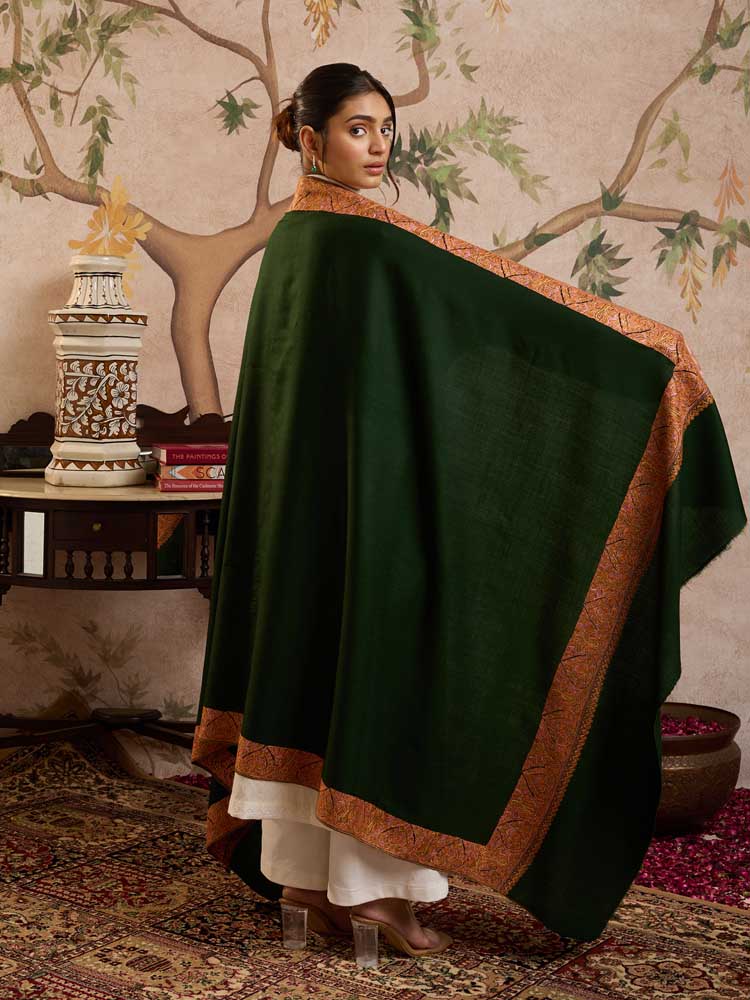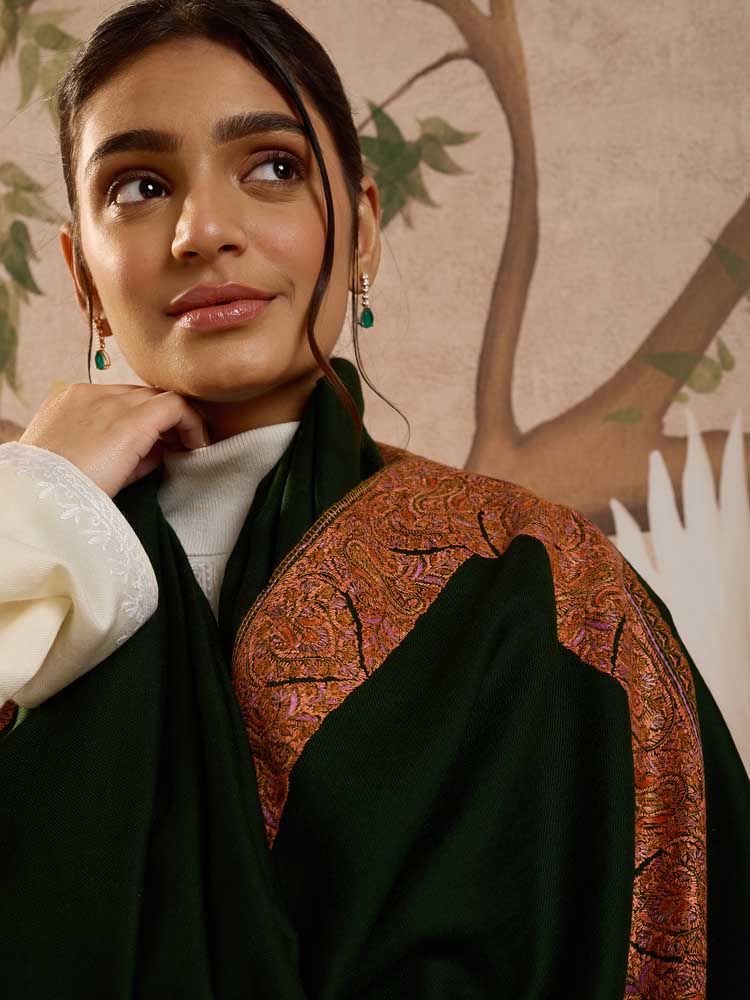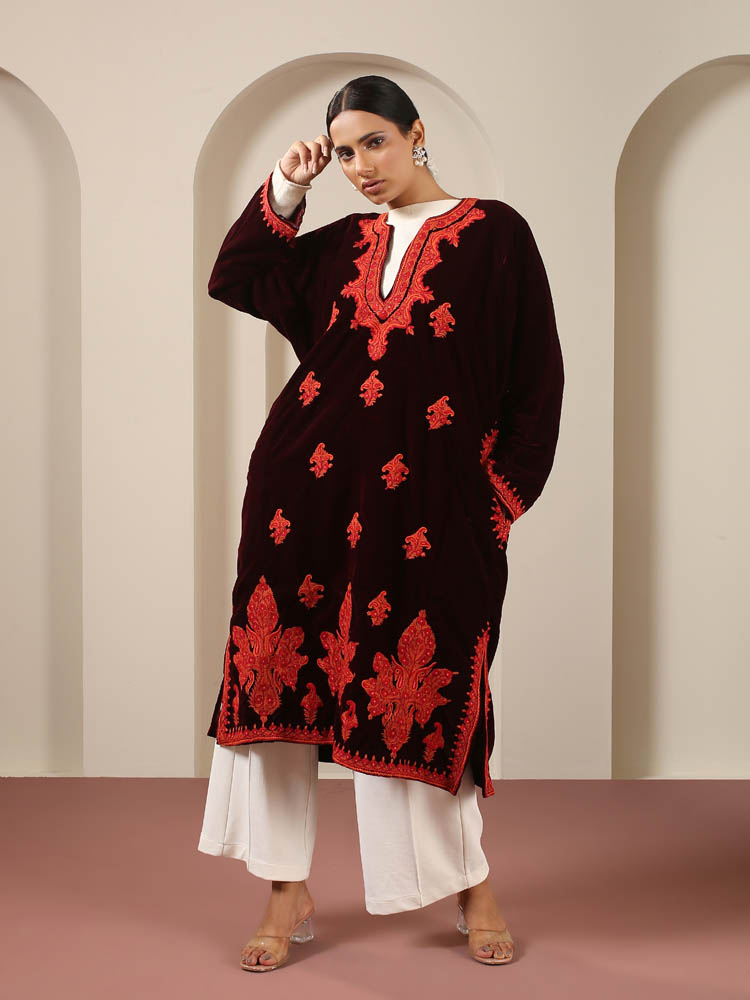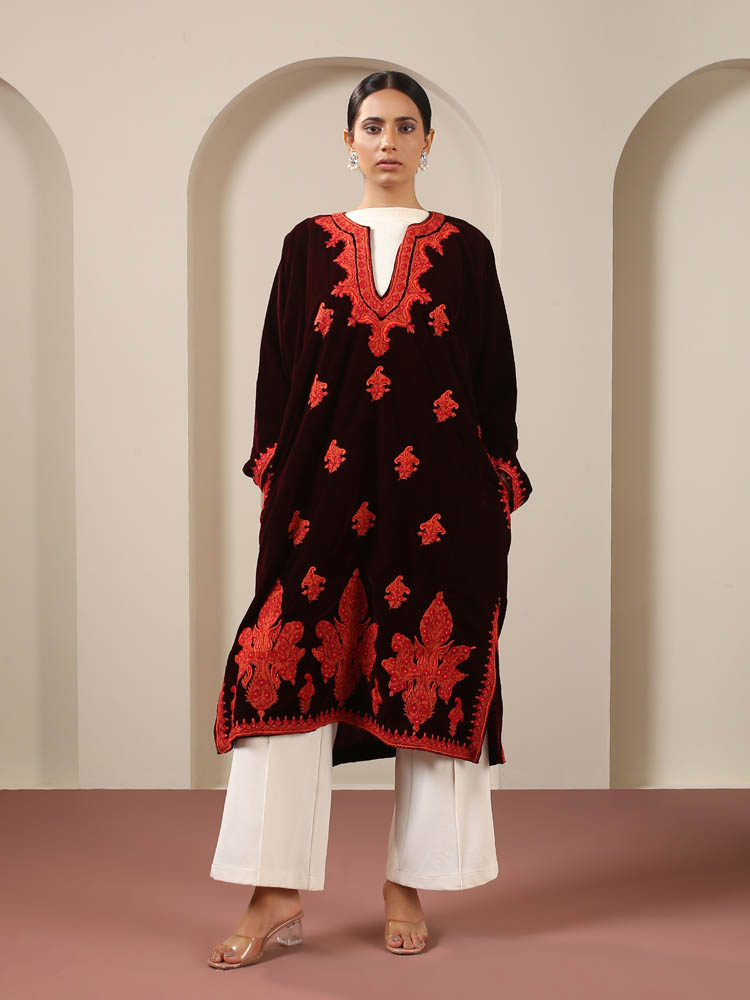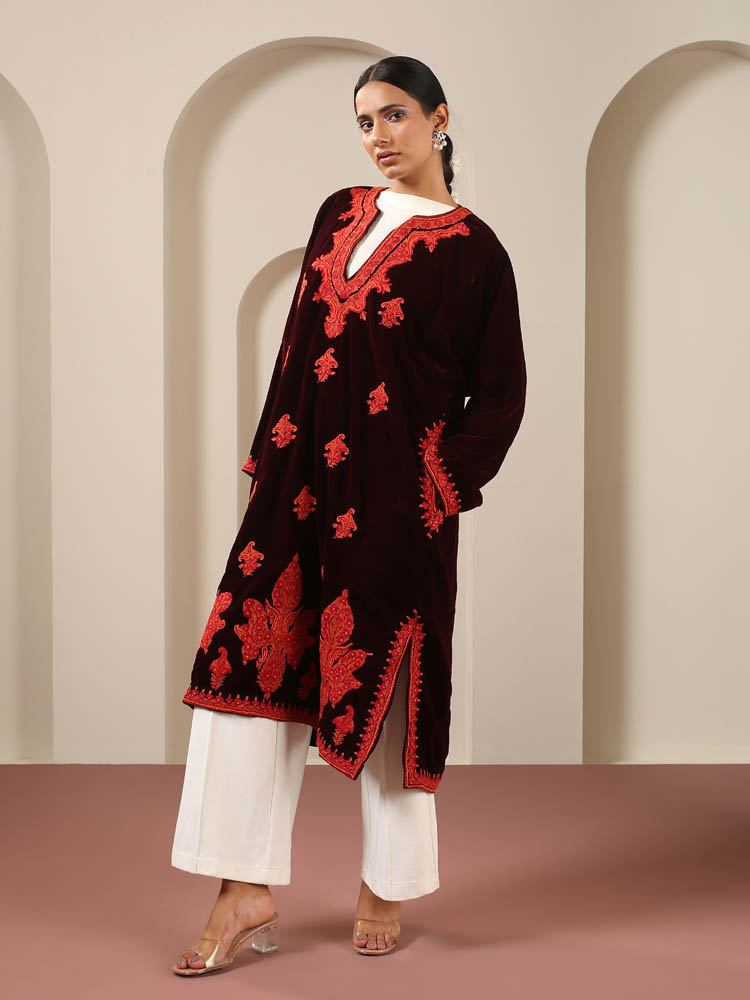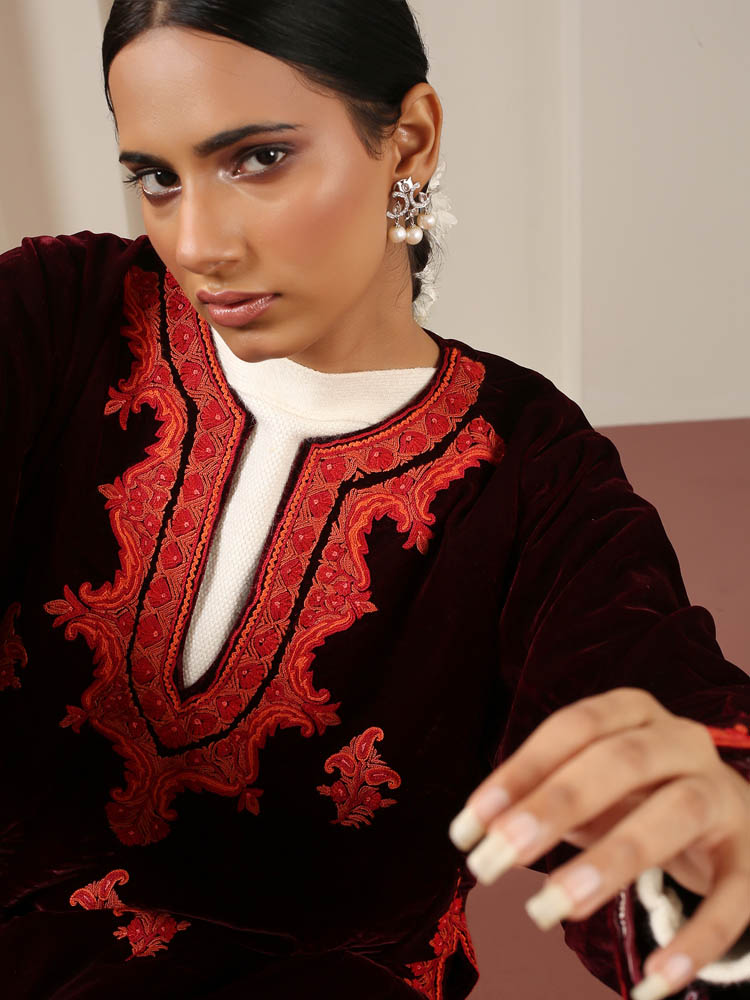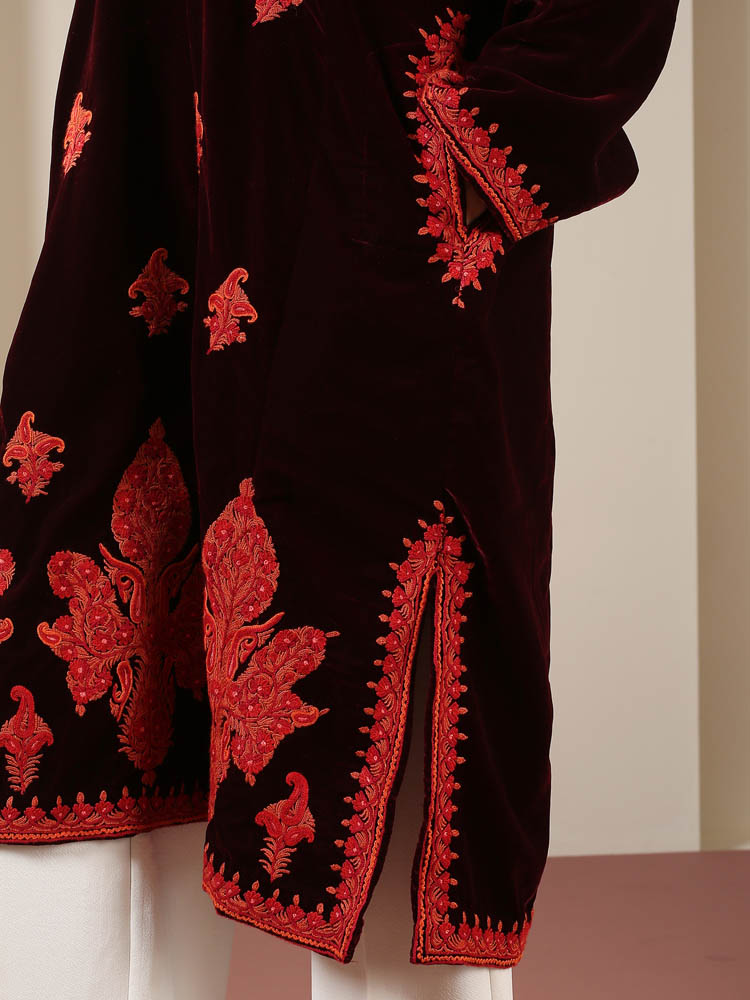India is home to different types of textiles. Throughout centuries, crafts have been rooted as a culture and tradition. Maintaining originality, new types and trends have evolved like branches, in shawls and stoles in India.
There are various types of shawls from different parts of the country that are trending in today’s time in India. Shawls are produced by two techniques, loom woven or Kani shawls and the needle embroidered or sozni shawls.
Based on Region
Kullu Shawls
Kullu shawls are from the state of Himachal Pradesh. They are easy to recognize because of their patterned structure. Typical pattern includes geometric design on both ends.
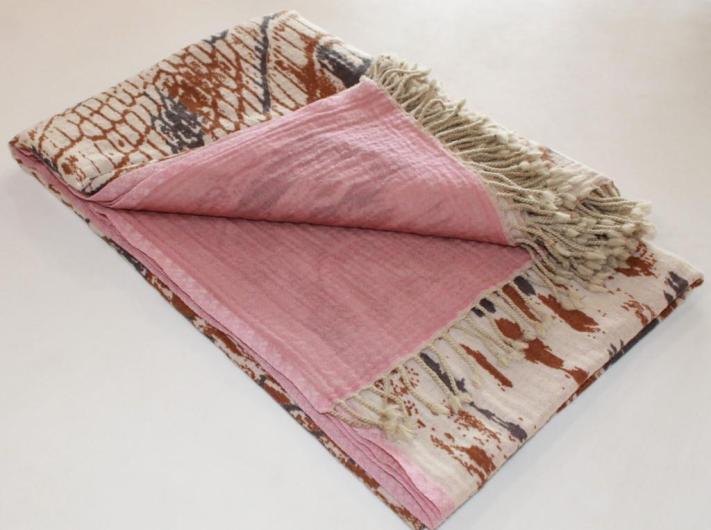
Dhabla Shawls
From the semi-desert region of Kutch, Dhabla is a one-of-a-kind, brightly colored cloth used by the Rabaris in ancient times. Wool is its main ingredient. The textured surface looks beautiful along the borders with varied colors. The simpler black or white shawls have extra weft motifs as ornaments.
Naga Shawls
Naga shawls are important clothing of Naga dressing. These shawls from Nagaland are famous for their exotic looks and design. These are traditional shawls symbolizing the folk stories of their region.
Pashmina Shawls
From the northernmost state of Kashmir, Pashmina shawls are the most popular around the world. Known for its warmth, ultra-softness, and beauty every shawl is a work of unique artistry and is a style statement.

Based on Design
Solid Shawls
A solid Pashmina shawl has no decorative details over its base. It includes a plain rich Pashmina base made of magnificent colors. There are still varieties based on the pattern of weave even though it is plain. Solid shawls justify– Simple yet elegant.
Embellished Shawls
During the Mughal era, plain pashminas got embellished for a richer and more traditional look. To keep up with the modern world of fashion, embellished Pashmina shawls now include print, pattern, ombre, Swarovski, embroidery, and lacework.
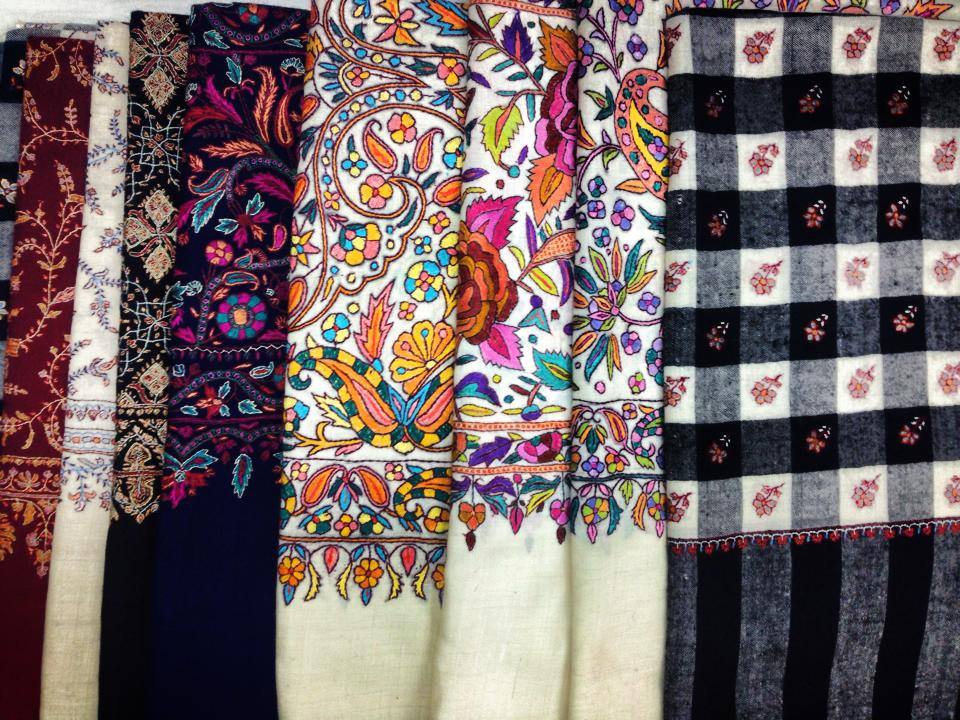
Embroidered Shawls
An embroidered Pashmina needs immense detailing and attention. An artisan spends months to years of his life embroidering a Pashmina shawl. Every work is unique and hence every shawl is. It is one of the most loved types of Pashmina shawl. They include traditional embroideries of sozni, zari, etc.
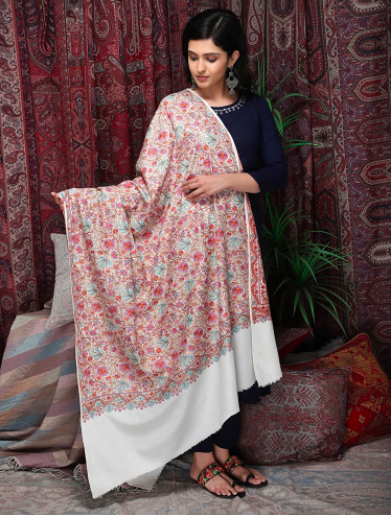
Zari Shawls
Zari shawls are embroidered with shimmer to give that extra glamour to your look. They are famous for the embroidery with gold, silver, and copper zari threads are known as zari tilla work. These shawls are for occasions, functions, etc, in the northern part of India. They add that shine to the outfit along with warmth and fashion,!
Reversible Shawls
Reversible shawls feature two magnificent tones of colors on either side of a single shawl. So it’s like owning two Pashmina shawls instead of one! It is an authentic choice, giving you two options in one.
Kani Shawls
Kani shawls are made using traditional heirlooms with the help of wooden needles. They come with a Mughal pattern on the fabric. Therefore, as a result, every shawl has knots. They feature intricate weaving and design.
Kalamkari shawls
Kalamkari shawls are mostly cotton. The word Kalamkari is derived from two different words ‘Kalam’ meaning ‘Pen’, and ‘Kari’ meaning ‘work’. In short, Kalamkari means the work of the pen. It includes drawing with a pen on fabric with hands, a brush, and a few natural dyes. They include hand-printed or block-printed designs.
Although dupattas are still a part of traditional attire, its contemporary form– the stole, is catching a wider audience in the fashion world. For instance, the stole is much shorter than a dupatta or a shawl, which makes it a lot more convenient. It is like a mini form of a shawl, used for styling.
The different types of stoles that trend in today’s time include printed stoles, cotton stoles, woolen stoles, rayon stoles, Pashmina stoles, silk stoles, and many more.
Shawls and Stoles are like accessories of the fashion and cloth world and are very important.
Fashion keeps evolving with time. Be it traditional or western. And this results in the new types and trends that we see today in India.









